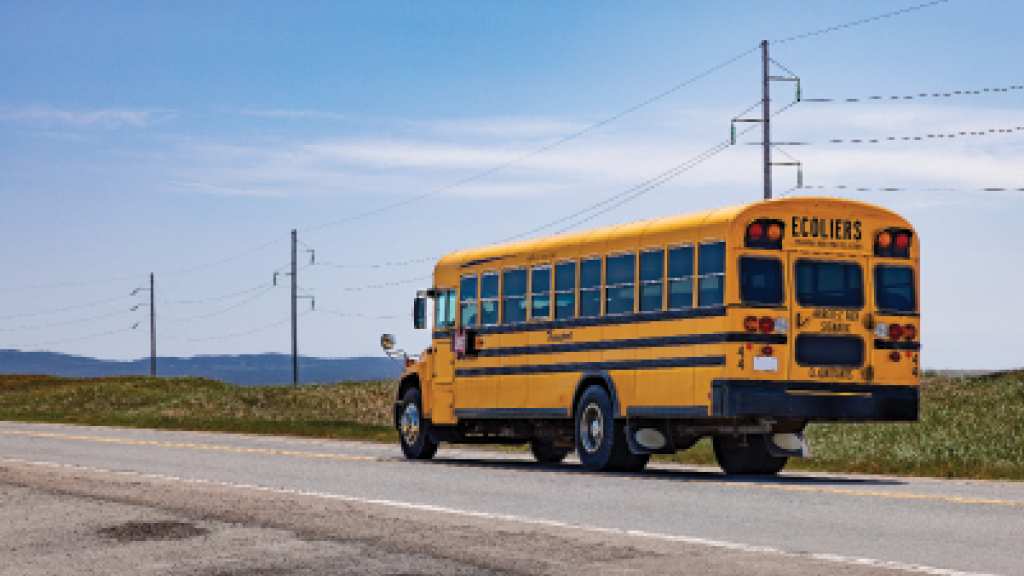
ANNEMARIE/STOCK.ADOBE.COM
A rural perspective in the process of setting education policies is often linked to spatial equity. However, “this emphasis on place fights the historic urbanization, standardization, and centralized accountability measures venerated in the last several decades of education policy,” Sara L. Hartman and Bob Klein wrote in the 2023 book they edited, The Middle of Somewhere: Rural Education Partnerships and Innovation. While publishing rural schooling statistics are not a solution to educational inequity for rural students, they are the first step to increasing the awareness that rural students, families, and communities deserve a voice in policymaking decisions and an investment in their educational infrastructures.
Defining rural
“Although commonalities among rural places exist, an official definition of what it means for a place to be rural does not exist” (Hartman and Klein, 2023). To report statistics, the U.S. Census Bureau defines rural as what is not urban—that is, after defining individual urban areas, rural is what is left. The National Center for Education Statistics (NCES) defines three subtypes of rural as follows:
Rural—Fringe: Census-defined rural territory that is less than or equal to five miles from an urbanized area, as well as rural territory that is less than or equal to 2.5 miles from an urban cluster.
Rural—Distant: Census-defined rural territory that is more than five miles but less than or equal to 25 miles from an urbanized area, as well as rural territory that is more than 2.5 miles but less than or equal to 10 miles from an urban cluster.
Rural—Remote: Census-defined rural territory that is more than 25 miles from an urbanized area and more than 10 miles from an urban cluster.
Rural schools in the U.S.
In 2021, there were 27,494 public elementary and secondary schools in rural fringe (41%), rural distant (36%), and rural remote (22%) communities. The pupil/teacher ratio in rural fringe schools was 15.5; in rural distant schools, 13.7; in rural remote schools, 12.2. On average, there were 553 students in a rural fringe school, 282 students in a rural distant school, and 163 in a rural remote school.
Students in rural schools
In 2021, 9.8 million students (20% of all public school students) attended public schools in rural areas. Two-thirds of rural students are white. The remaining one-third includes 16% Hispanic, 9% Black, 4% multiracial, 2% Asian, 2% American Indian/Alaska Native (AI/AN), and 0.2% Pacific Islander.
In 2020, 320,000 students (4.4%) in rural schools were English learners. In 2019, 1.1 million (15%) students with disabilities attended rural schools. Before the pandemic, 14% of rural children ages 5-17 lived in poverty.
In the fall of 2021, 1.3 million students attended rural schools in which more than 75% of students in school were eligible for free or reduced-price lunch, including 35% of AI/AN, 30% of Black, 25% of Hispanic, 22% Pacific Islander, and 12% of multiracial students.
Teachers in rural schools
About 633,000 full-time teachers work in rural public schools, according to the most recently available national data. Approximately 90% of rural teachers are white. In 2022, 6% of fourth grade and eighth grade teachers in rural schools identified themselves as Black; about 4%, Hispanic; 1%, Asian; and 1%, AI/AN.
Teacher shortage has been a challenge to both rural and urban districts in the country. In October 2022, 36% of rural schools reported having at least one teaching vacancy in the 2022-23 school year. In the 2021-22 school year, 10% of rural teachers and 21% of rural principals retired or resigned.
Revenues and expenditures
In the 2018-19 school year, rural schools received more than $110 billion (in unadjusted dollars) from federal (7.4%), state (49.3%), and local (43.3%) sources. At the same time, rural school per-student spending was $14,312 in geographically adjusted current expenditure ($13,635 in rural fringe schools, $14,456 in rural distant schools, and $16,713 in rural remote schools).
Learning recovery
Like their urban counterparts, rural schools are implementing strategies to tackle post-pandemic learning recovery. In December 2022, nearly all public schools in rural areas had students behind grade level in English language arts (98%) and math (99%). During the 2021–22 school year, 91% of rural schools supported pandemic-related learning recovery by identifying individual needs with diagnostic assessment data; 83% helped students to catch up by identifying individual needs with formative assessment data; 81% provided remedial instruction.
Mental health
In April 2022, approximately 60% of rural schools reported that the percentage of students who had sought mental health services from school had increased since the start of the coronavirus pandemic. At the same time, 79% of rural schools had provided a school-based mental health service. Although officials of 76% of rural schools reported that they encouraged existing staff to address student social, emotional, and mental well-being, only 30% of rural school officials felt that their school was able to provide mental health services to all students in need effectively.
The perspective of rural schools often gets lost in research and in policy decisions at the state and federal levels. Hopefully this data will serve as a reminder that a rural-specific viewpoint should be considered when making policies for students in rural schools.
______________________________________________________________________________________________________________________
Jinghong Cai (jcai@nsba.org) is the senior research analyst at NSBA’s Center for Public Education.

Share this content